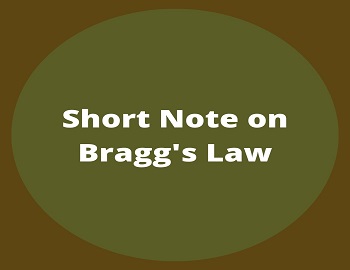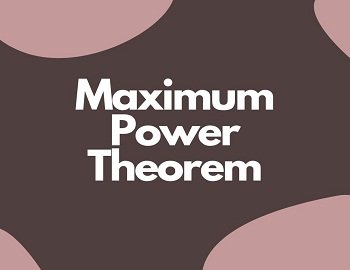Dimensional Analysis:
To find the dimension of a physical quantity, we first write the quantity in terms of basic quantities and proceed as illustrated in the examples given below.
(1) Density = mass/volume = mass/length x breadth x height
⇒ [ρ] = M/L x L x L = ML-3
where the symbol [ ] stands for “dimension of” the quantity written in the parenthesis.
(2) Force acting on a particle of mass m is related to the acceleration “a” is given by
F = ma
⇒ [F] = [m] [a]
Since the dimensional formula for acceleration is LT-2 i.e.
⇒ [F] = (M) (LT-2) = MLT-2
| Physical Quantity | Derivable Formula | Unit | Dimensional Formula |
|---|---|---|---|
| Area (A) | length x breadth | m2 | [M0 L2 T0] |
| Volume (V) | length x breadth x height | m3 | [M0 L3 T0] |
| Density (d or ρ) | mass/volume | kg/m3 | [M L-3 T0] |
| Specific Gravity or Relative Density | density of body/density of water at 4°C | no unit | [M0 L0 T0] |
| Speed or Velocity (ν) | displacement/time | m/s | [M0 L1 T-1] |
| Acceleration (a) | change in velocity/time taken | m/s2 | [M0 L1 T-2] |
| Linear Momentum (p) | mass x velocity | kg⋅m/s | [M1 L1 T-1] |
| Acceleration due to gravity (g) | change in velocity/time taken | m/s2 | [M0 L1 T-2] |
| Force (F) | mass x acceleration | kg⋅m/s2 or newton (N) | [M1 L1 T-2] |
| Impulse (I) | force x time | Ns | [M1 L1 T-1] |
| Pressure (p) | force/area | N/m2 | [M1 L-1 T-2] |
| Work (W) or Energy (E) | force x displacement | kg⋅m2/s2 or Joule | [M1 L2 T-2] |
| Torque or Moment of Couple (𝜏) | force x perpendicular distance | Nm | [M1 L2 T-2] |
| Power (P) | work/time | watt (W) | [M1 L2 T-3] |
| Wavelength (λ) | length of one wave i.e. distance | m | [M0 L1 T0] |
| Frequency (n) | number of vibrations/sec | hertz (Hz) | [M0 L0 T-1] |
| Angle (θ) | arc/radius | radian | [M0 L0 T0] |
| Solid Angle (Ω) | surface area/(radius)2 | steradian | [M0 L0 T0] |
| Angular Velocity or Angular Frequency (ω) | angle/time | radian/s | [M0 L0 T-1] |
| Angular Acceleration (α) | change in angular velocity/time taken | radian/s2 | [M0 L0 T-2] |
| Radius of Gyration (K) | distance | m | [M0 L1 T0] |
| Moment of Inertia (I) | mass x (distance)2 | kg m2 | [M1 L2 T0] |
| Angular Momentum (J) | momentum x distance | kg.m2/s | [M1 L2 T-1] |
| Stress | force/area | N/m2 | [M L-1 T-2] |
| Strain | change in length (for volume)/original length (for volume) | no unit | [M0 L0 T0] |
| Coefficient of Elasticity | stress/strain | N/m2 | [M L-1 T-2] |
| Poisson’s Ratio (σ) | lateral strain/longitudinal strain | no unit | [M0 L0 T0] |
| Velocity Gradient | velocity/distance | s-1 | [M0 L0 T-1] |
| Coefficient of Viscosity (η) | F/[A (dν/dt)] | Ns/m2 | [M1 L-1 T-1] |
| Surface Tension (T) | force/length | N/m | [M1 L0 T-2] |
| Force Constant (k) | force/displacement | N/m | [M1 L0 T-2] |
| Universal Gravitational Constant (G) | G = Fr2/m1m2 | Nm2/kg2 | [M-1 L3 T-2] |
| Intensity of Gravitational Field (Eg) | GM/r2 | N/kg | [M0 L1 T-2] |
| Gravitational Potential (Vg) | GM/r | J/kg | [M0 L2 T-2] |
| Mechanical Equivalent of Heat (J) | work energy/heat energy | J/calorie | [M0 L0 T0] |
| Specific Heat Capacity (s) | heat energy/(mass x temperature difference) | J/kg.K | [M0 L2 T-2 θ-1] |
| Thermal Capacity | heat energy/temperature difference | J/K | [M1 L2 T-2 θ-1] |
| Latent Heat (L) | heat energy/mass | J/kg | [M0 L2 T-2] |
| Universal Gas Constant (R) | PV/T | J/K | [M1 L2 T-2 θ-1] |
| Thermal Conductivity (K) | (Q/t)/[A(dθ/dt) | W/m.K | [M1 L1 T-3 θ-1] |
| Coefficient of Linear Expansion (α) | change in length/(original length x temperature difference) | K-1 | [M0 L0 T0 θ-1] |
| Coefficient of Volume Expansion (γ) | volume/(original volume x temperature difference) | K-1 | [M0 L0 T0 θ-1] |
| Refractive Index (µ or n) | velocity of light in vacuum/velocity of light in medium | no unit | [M0 L0 T0] |
| Electric Charge (Q) | current x time | Coulomb | [M0 L0 T1 A1] |
| Electric Field Intensity (E) | electric force/charge | N/Coulomb | [M1 L1 T-3 A-1] |
| Electric Potential (V) | work/charge | J/Coulomb or volt | [M1 L2 T-3 A-1] |
| Permittivity (ε) | Q1Q2/4πr2F | Coulomb2/N.m2 | [M-1 L-3 T4 A2] |
| Dielectric Constant or Relative Permittivity (K) | medium/permittivity of free space | no unit | [M0 L0 T0] |
| Capacitance (C) | charge/potential difference | Coulomb/volt or farad | [M-1 L-2 T4 A2] |
| Electrical Resistance (R) | potential difference/current | ohm | [M L2 T-3 A-2] |
| Magnetic Field Induction (B) | F/Qν.sin θ | weber/m2 or tesla | [M1 L0 T-2 A-1] |
| Magnetic Flux (Φ) | field x area | volt-second or weber | [M1 L2 T-2 A-1] |
| Magnetic Permeability (µ) | B/H | henries/metre | [M1 L1 T-2 A-2] |
| Magnetic Moment (M) | torque/B.sin θ | Ampere.m2 | [M0 L2 T0 A1] |
| Intensity of Magnetisation (M) | magnetic moment/volume | ampere/m | [M0 L-1 T0 A1] |
| Inductance (L) | potential difference/(di/dt) | henry | [M1 L2 T-2 A-2] |
| Rate of Flow | volume/time | m3/s | [M0 L3 T-1] |
| Planck’s Constant (h) | energy/frequency | J.s | [M1 L2 T-1] |
| Mass of Unit Length (m) | mass/length | kg/m | [M1 L-1 T0] |
| Distance Travelled in nth Second | distance/time | m/s | [M0 L1 T-1] |
| Avogadro’s Number (N) | number of atoms/molecules in one gram atom/mole | mole-1 | [M0 L0 T0] |
| Reynold Number (NR) | ρDν/η | no unit | [M0 L0 T0] |
| Rydberg Constant (R) | 2π2mK2e4/ch3 | m-1 | [M0 L-1 T0] |
| Stefan’s Constant (σ) | (energy emitted)/[(area x time) (temp)4] | watt.m-2K-4 | [M1 L0 T-3 θ-4] |
| Boltzmann Constant (k) | energy/temperature | J.K-1 | [M1 L2 T-2 θ-1] |









Comments (No)